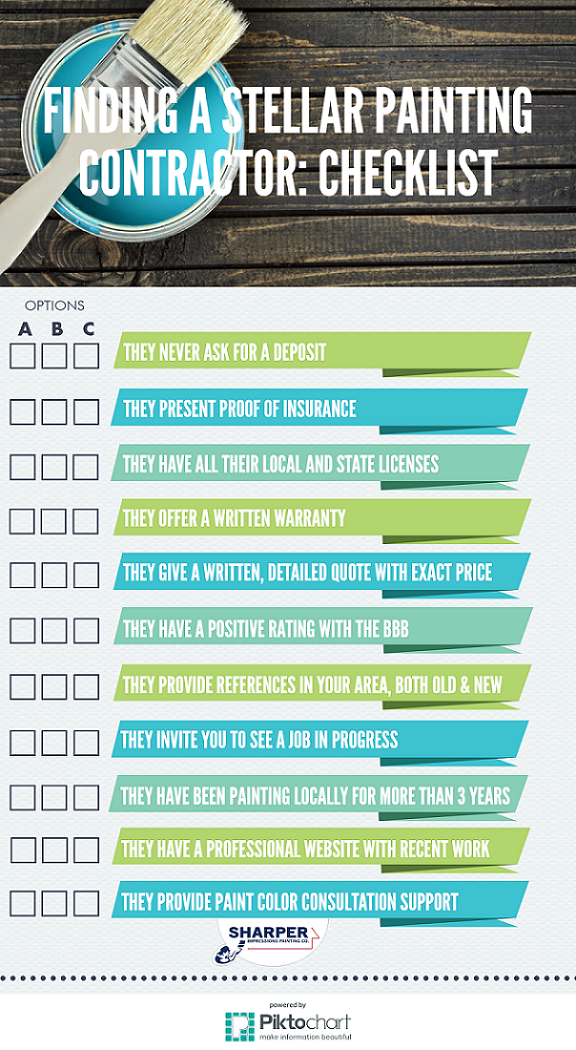Explore The Link In Between Weather Elements And The Success Of Your Exterior Paint Task To Attain A Remarkable Result
Explore The Link In Between Weather Elements And The Success Of Your Exterior Paint Task To Attain A Remarkable Result
Blog Article
moved here -Mclean Thuesen
Comprehending just how weather can affect the result of an outside painting endeavor is extremely important for achieving a perfect coating. From temperature fluctuations modifying paint bond to moisture degrees impacting drying times, each aspect of weather plays a substantial duty in the success of your task. Furthermore, wind rate and precipitation can introduce unanticipated difficulties that may compromise the quality of the final result. As we navigate through the nuances of weather condition's influence on outside paint, it becomes apparent that thorough preparation and critical timing are crucial for making sure an expert and long lasting end result.
Ideal Temperature Level Array for Painting
When taking into consideration external painting projects, the suitable temperature level range plays a crucial duty in achieving optimal outcomes. Painting in the best temperature level problems ensures that the paint adheres effectively to the surface area, dries out uniformly, and cures successfully. Usually, the suggested temperature variety for exterior painting is between 50 to 85 levels Fahrenheit.
Paint in temperatures below 50 levels Fahrenheit can bring about issues such as inadequate paint bond, prolonged drying times, and an enhanced probability of cracking or peeling.
On the other hand, painting in temperature levels above 85 degrees Fahrenheit can create the paint to dry too swiftly, resulting in blistering, bubbling, and an irregular finish.
To accomplish the most effective outcomes, it is important to inspect the weather forecast before beginning an outside painting job. Ideally, goal to repaint throughout mild climate condition with moderate temperature levels and reduced humidity levels.
Effects of Humidity on Paint Drying
Moisture degrees significantly impact the drying process of paint applied to exterior surface areas. High humidity can prolong the drying out time of paint, resulting in possible issues such as dripping, streaking, or perhaps the formation of bubbles on the repainted surface. Excess dampness airborne slows down the evaporation of water from the paint, impeding the healing process. This is specifically problematic for water-based paints, as they depend on dissipation for drying out.
On the other hand, low humidity degrees can additionally affect paint drying out. Extremely dry conditions may cause the paint to completely dry too promptly, resulting in bad attachment and a rough coating. In such cases, adding a paint conditioner or spraying a great haze of water airborne can assist regulate moisture degrees and improve the painting result.
To ensure optimum drying out conditions, it is recommended to paint when the moisture levels range in between 40% and 50%.
Monitoring moisture levels and taking appropriate steps can help attain a smooth and long lasting paint coating on exterior surfaces.
Wind and Precipitation Considerations
Wind speed and precipitation are vital factors that substantially affect the success of an outside painting project.
When it involves wind, both rate and direction are vital considerations. High wind rates can trigger paint to completely dry also swiftly, resulting in a subpar completed with potential problems like splitting or irregular texture. Furthermore, wind can lug particles that may stick to the wet paint, resulting in flaws. As a result, painters must intend to service days with light to moderate winds for ideal paint conditions.
On the other hand, precipitation, whether rain or snow, can be incredibly detrimental to the result of an exterior paint task. Wetness from rainfall can hinder paint attachment, creating peeling off and bubbling over time. It is important to stay clear of painting throughout rainy or snowy weather condition to guarantee the long life and top quality of the paint task. Painters ought to additionally enable adequate time for the surface to dry extensively after any kind of precipitation before beginning or resuming the painting process.
Best Paint Colors Whole House
To conclude, weather play a considerable duty in the result of an external paint job. The excellent temperature level variety, humidity degrees, wind speed, and rainfall all add to the success or failure of the paint task.
It is vital to consider these aspects and plan as necessary to ensure correct paint attachment, drying out times, and overall high quality of the ended up item.
